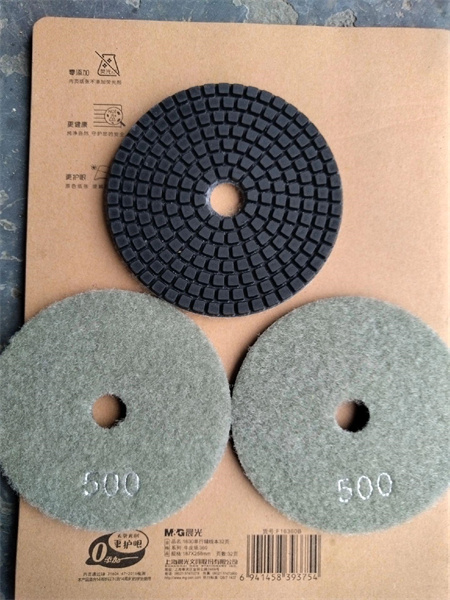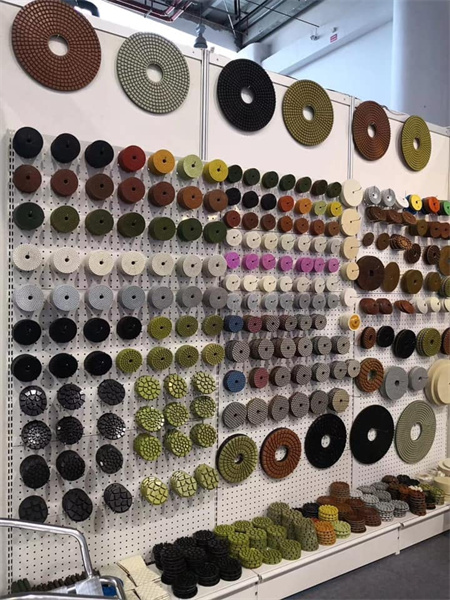Speed and Pressure Guidelines for Diamond Pads
Diamond pads are essential tools for a variety of polishing and grinding applications. Whether you’re working on concrete, marble, granite, or other surfaces, these pads can deliver a flawless finish. However, achieving optimal results with diamond pads requires more than just choosing the right grit or material. Speed and pressure play a crucial role in maximizing the effectiveness of diamond pads and extending their lifespan.



For instance, when working with harder materials like granite, you might need to operate the machine at a lower speed to prevent excessive heat buildup, which can damage the diamond pad and the surface. Too much heat can also lead to discoloration or burn marks on the stone. On the other hand, for softer materials like marble, a higher speed may be more appropriate to achieve the desired results faster and more effectively.
In general, it’s important to match the speed to the hardness of the material. Soft materials typically require higher speeds, while harder materials need slower speeds to prevent overheating and to provide better control over the polishing process. Always start at a moderate speed and adjust as needed based on the surface response.
Pressure and Its Impact
Pressure is equally important when using diamond pads. Too much pressure can cause the diamonds to wear out too quickly or cause damage to the surface you’re working on. Applying excessive pressure also increases the risk of uneven results, as the pad may wear down in certain areas more quickly than others.
For optimal performance, the general rule is to apply light to moderate pressure. If you’re using a floor machine or hand grinder, avoid forcing the tool down onto the surface. Instead, let the weight of the machine do most of the work. The pad should be in contact with the surface enough to provide a consistent and effective grinding or polishing action, but without excessive pressure that could lead to premature wear.
It’s also important to remember that the type of surface you’re working on can influence the amount of pressure you should apply. For example, if you’re polishing a delicate surface like terrazzo or marble, too much pressure can leave marks or cause the surface to dull. Conversely, when working on tougher surfaces like concrete, applying a bit more pressure may help in speeding up the process.
Balancing Speed and Pressure
Finding the right balance between speed and pressure is key to maximizing the performance of your diamond pads. Too much of either can reduce the effectiveness of the pad, while too little can lead to slower results and the need for more time-consuming passes.
A common mistake is to increase both speed and pressure at the same time to achieve faster results. While this may seem logical, it often results in diminishing returns. Instead, experiment with adjusting either speed or pressure first, depending on the specific job and material, and then fine-tune the other parameter to achieve the best balance.
If you’re unsure about the right settings, it’s a good idea to start with low speed and light pressure, and then gradually increase either speed or pressure to test the results. Keep a close eye on the wear of the pad, the surface condition, and the quality of the finish to adjust your technique accordingly.
Maintaining Diamond Pads for Longevity
One of the advantages of diamond pads is their durability when properly maintained. Using the correct speed and pressure is a big part of extending the life of your pads, but other factors come into play as well. Regularly cleaning the pads to remove debris and buildup can help preserve their cutting and polishing ability. Additionally, ensuring the pads are dry before use (if working with dry pads) can prevent premature wear caused by excessive moisture.
Another tip is to rotate your diamond pads regularly to ensure even wear. Avoiding excessive heat buildup is key to maintaining their effectiveness, so always let the machine cool down if you’ve been using it for long periods.
Conclusion
Achieving the perfect polished finish with diamond pads isn’t just about the pads themselves – it’s about understanding how speed and pressure interact and how to use them effectively. Each project and material might require slight adjustments, but keeping speed at appropriate levels for the material hardness, combined with moderate pressure, will help you achieve the best results while extending the life of your pads. With a little practice and attention to detail, you can master the art of polishing and grinding with diamond pads, creating flawless surfaces that last.